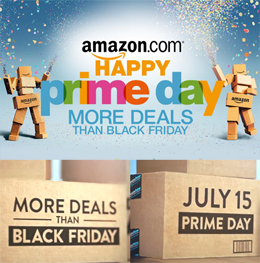In case you missed it, Amazon hosted its third annual Amazon Prime Day last week. The event is often compared to Black Friday, as the e-commerce giant rewards its Amazon Prime members through deep discounts and promotions on its products. What’s different about Black Friday and Amazon Prime Day is where consumers are shopping—it is traditional brick and mortar versus the virtual world. Coincidently, Amazon Prime Day this year took place on the same day Kline presented about the shift in where beauty consumers are shopping at the Cosmoprof NA event.
Consumers are shifting their shopping habits for their beauty products even more this year finds Kline’s latest study covering the U.S. beauty retailing market. Brick and mortar is still a very important part of the beauty retailing equation at about 86% of total beauty sales, but the channel is losing market share to an extremely fierce force in the beauty retailing environment—e-commerce. E-commerce sales in the beauty industry have been growing at over 20% since 2011 due to the speed, promotions, exclusivity, and technology that has made it more convenient and reliable to shop online. In fact, Kline found that, from a survey conducted in April 2017, 74% of U.S. consumers have purchased facial skin care products through Amazon.
Events like Amazon Prime Day showcase why it is so appealing for consumers to purchase products through the virtual channel and why it is a win-win for retailers to host such events. The day pushes more memberships through exclusive deals, but also shows consumers that they are appreciated by providing private deals and promotions to their members.
In stark contrast, department store retailers are making efforts on a storewide scale to lure beauty consumers to make purchases at nominal savings. On the other hand, specialty retailers, such as Sephora, make stronger efforts to offer consumers a real reason to stock up and save with events like its semi-annual VIB sale. The sale gives Sephora loyalty members the convenience of shopping online or in stores for exclusive beauty deals at 10%-20% off, depending on the consumer’s level of loyalty, twice a year.
It is clear that retailers who continue to focus on developing their e-commerce business and make it seamless for consumers to purchase online see the benefits of their efforts. Consumers will continue to be immersed in purchasing wherever is convenient for them—this may be where they can educate themselves through videos and tutorials, where they can virtually try products on, where they can read reviews, or where they can get a new item quickly.
To learn more about what is happening in beauty retailing, please contact us.

